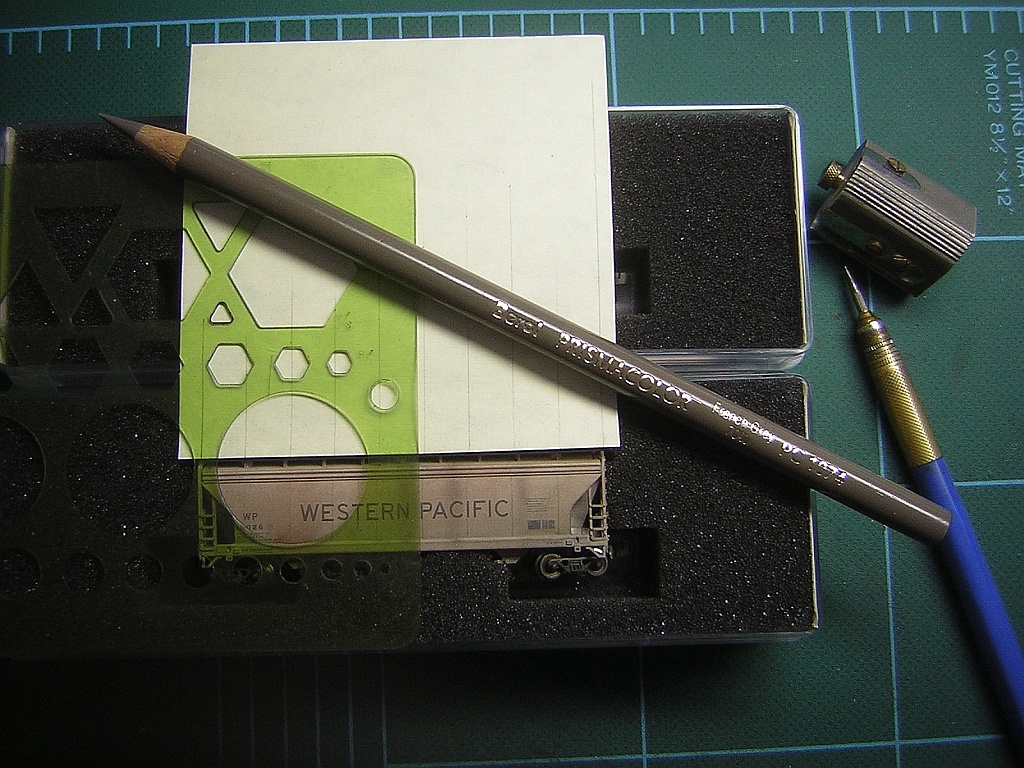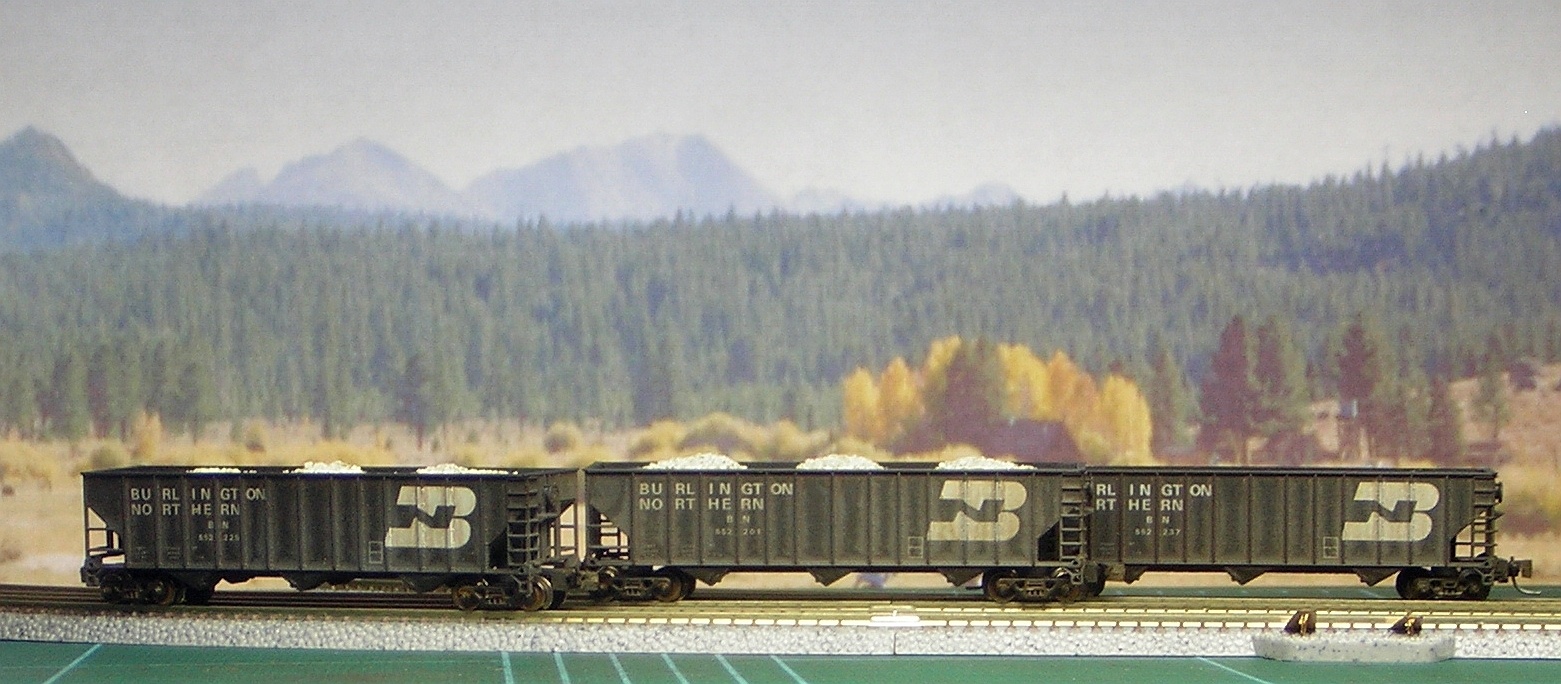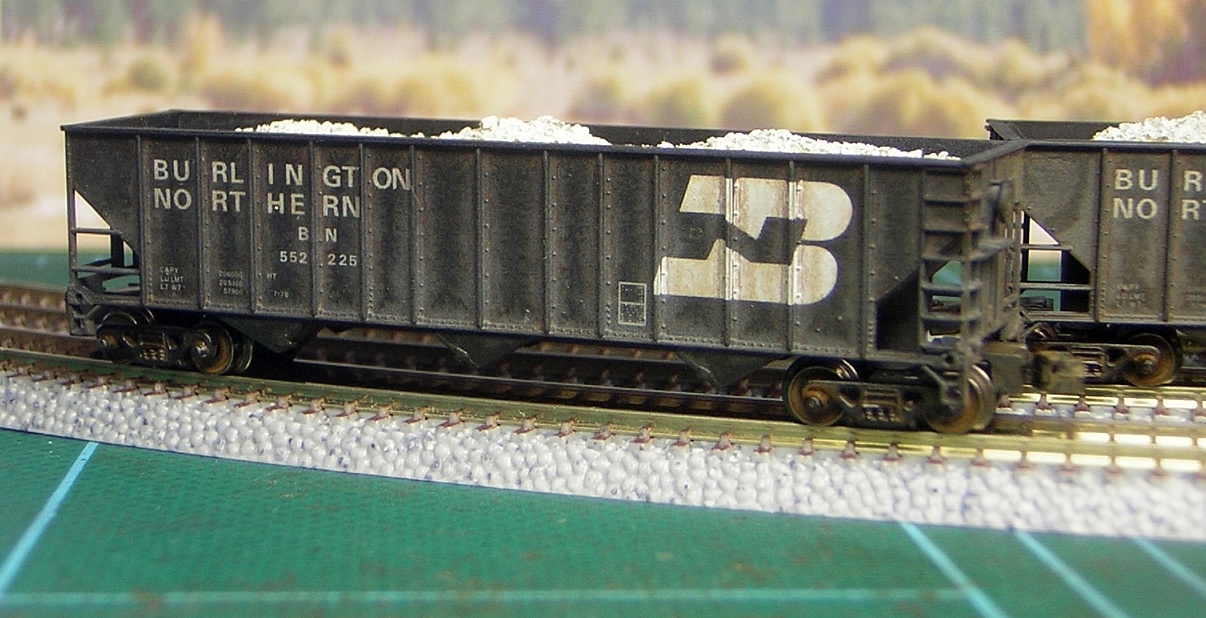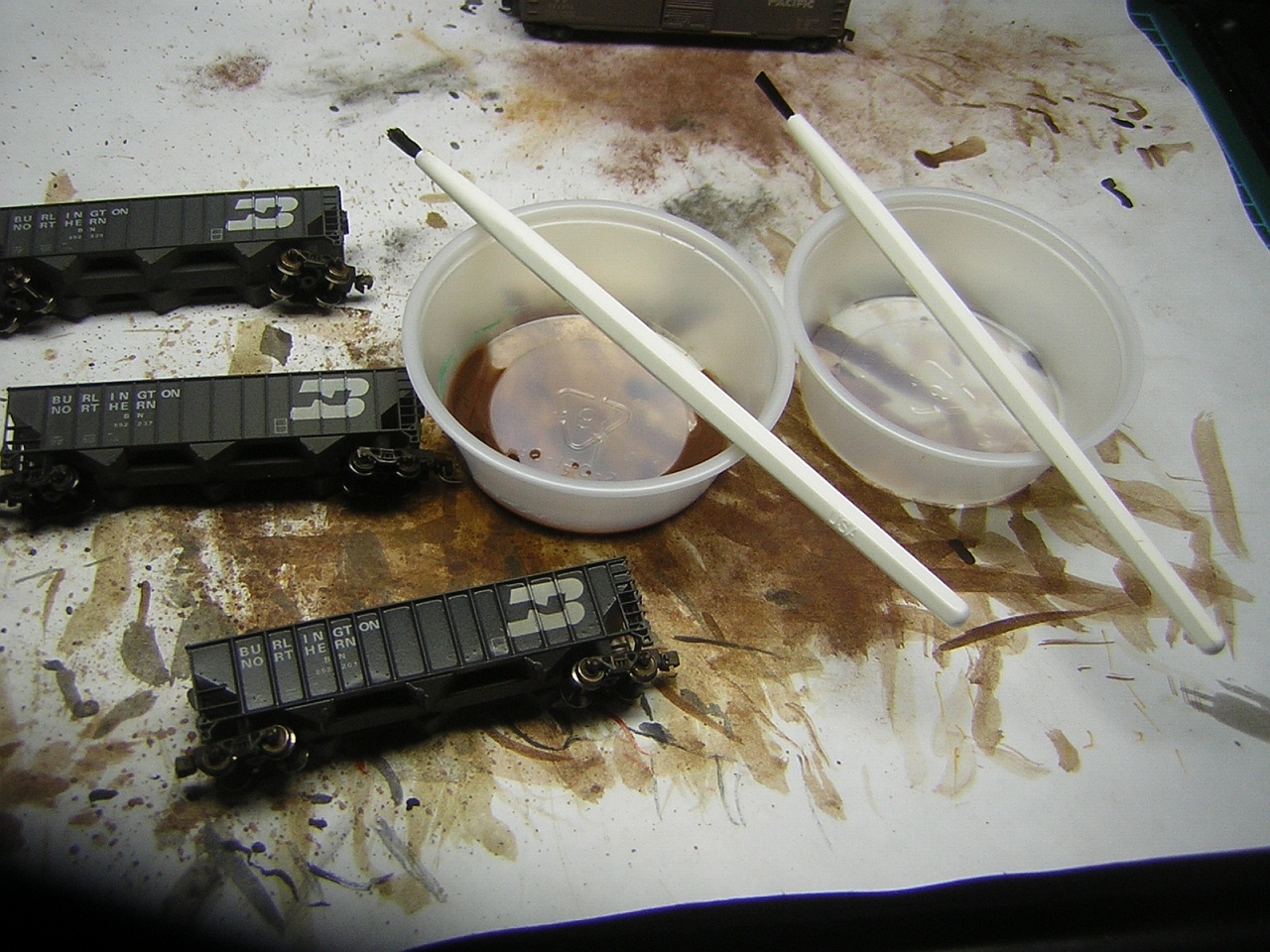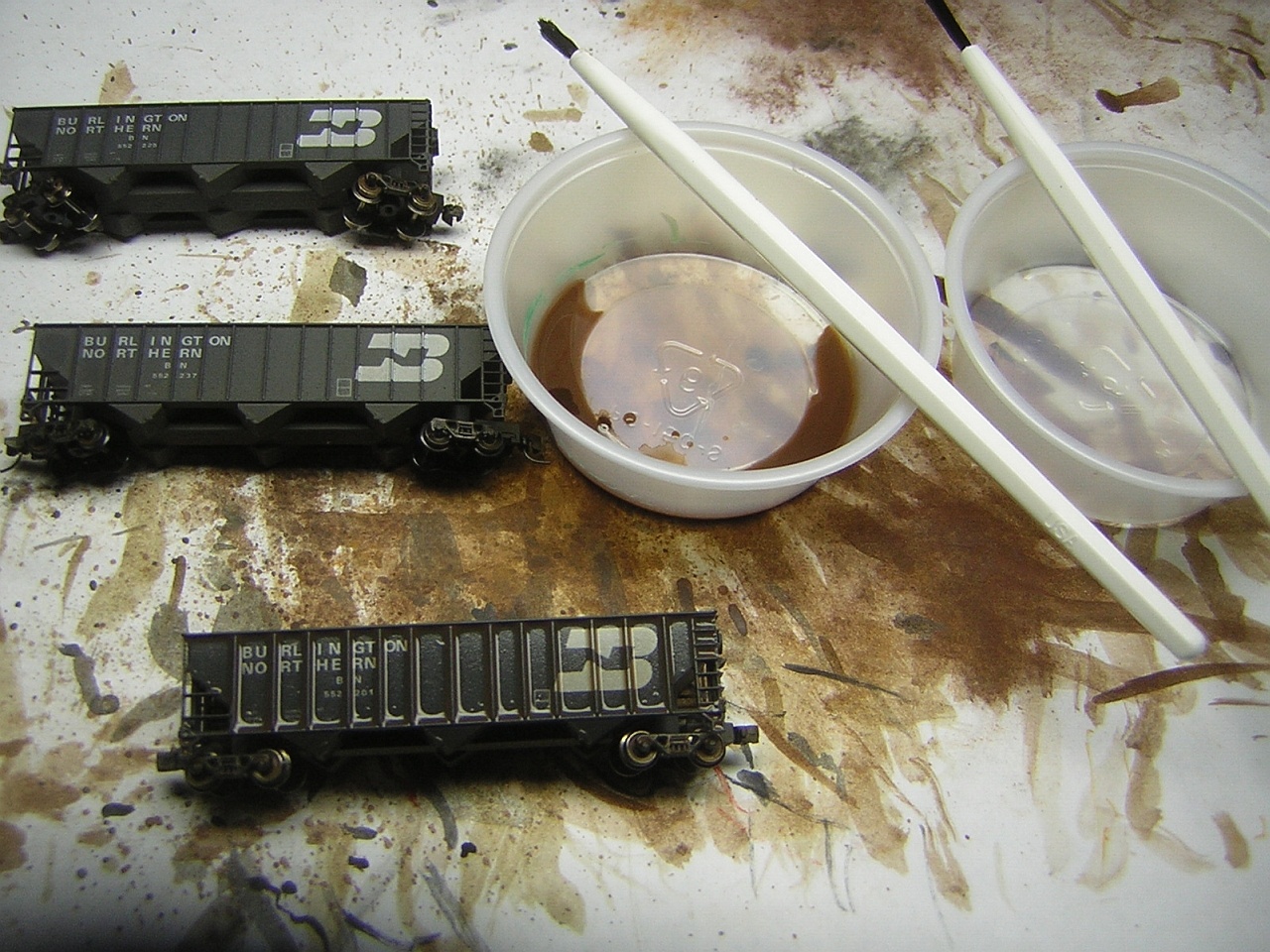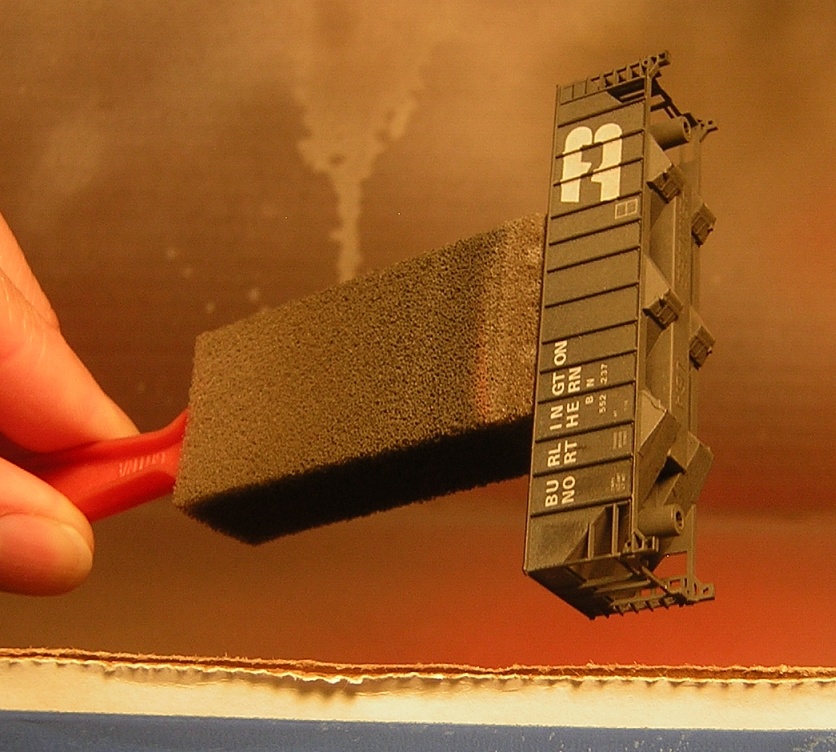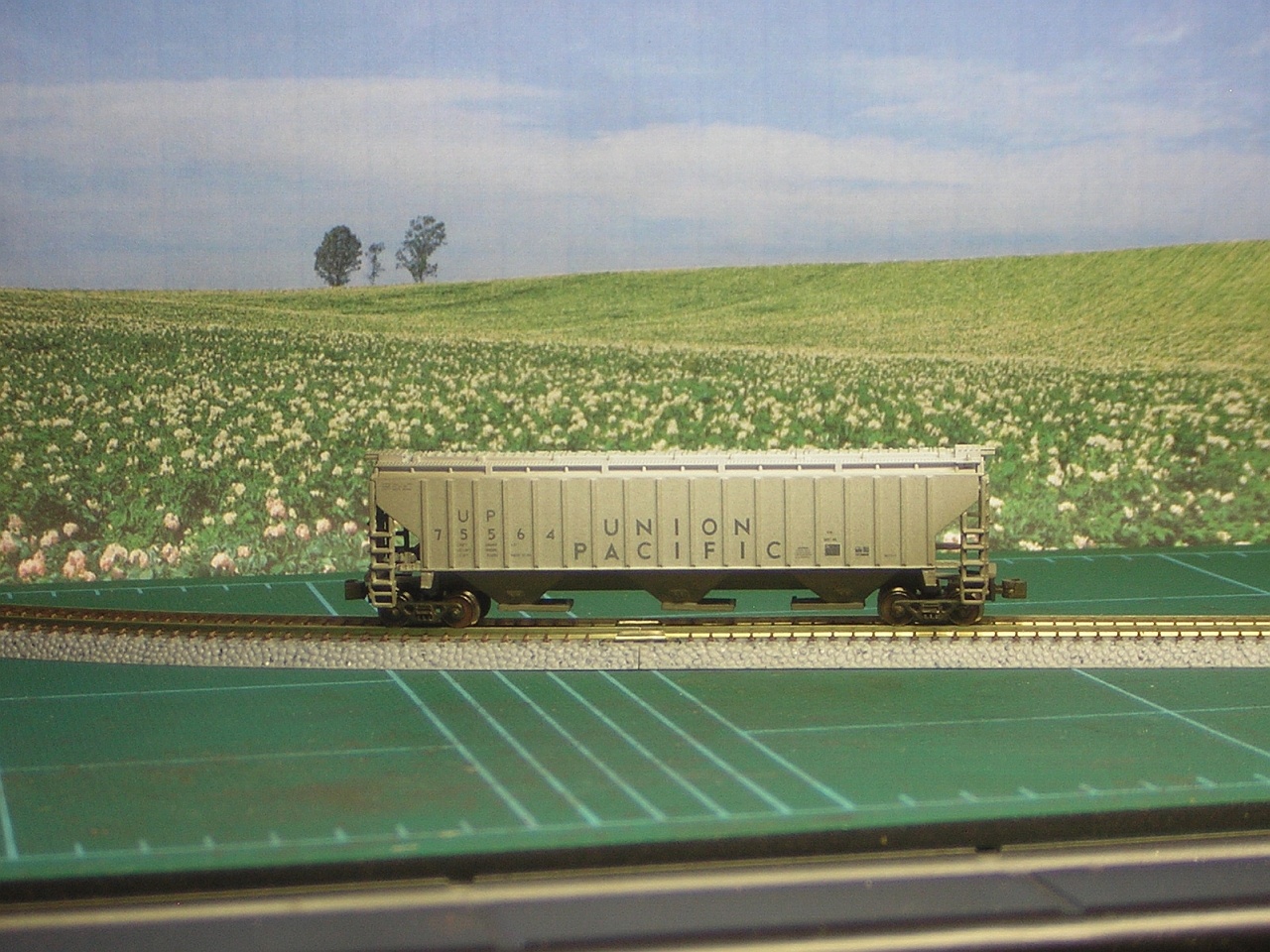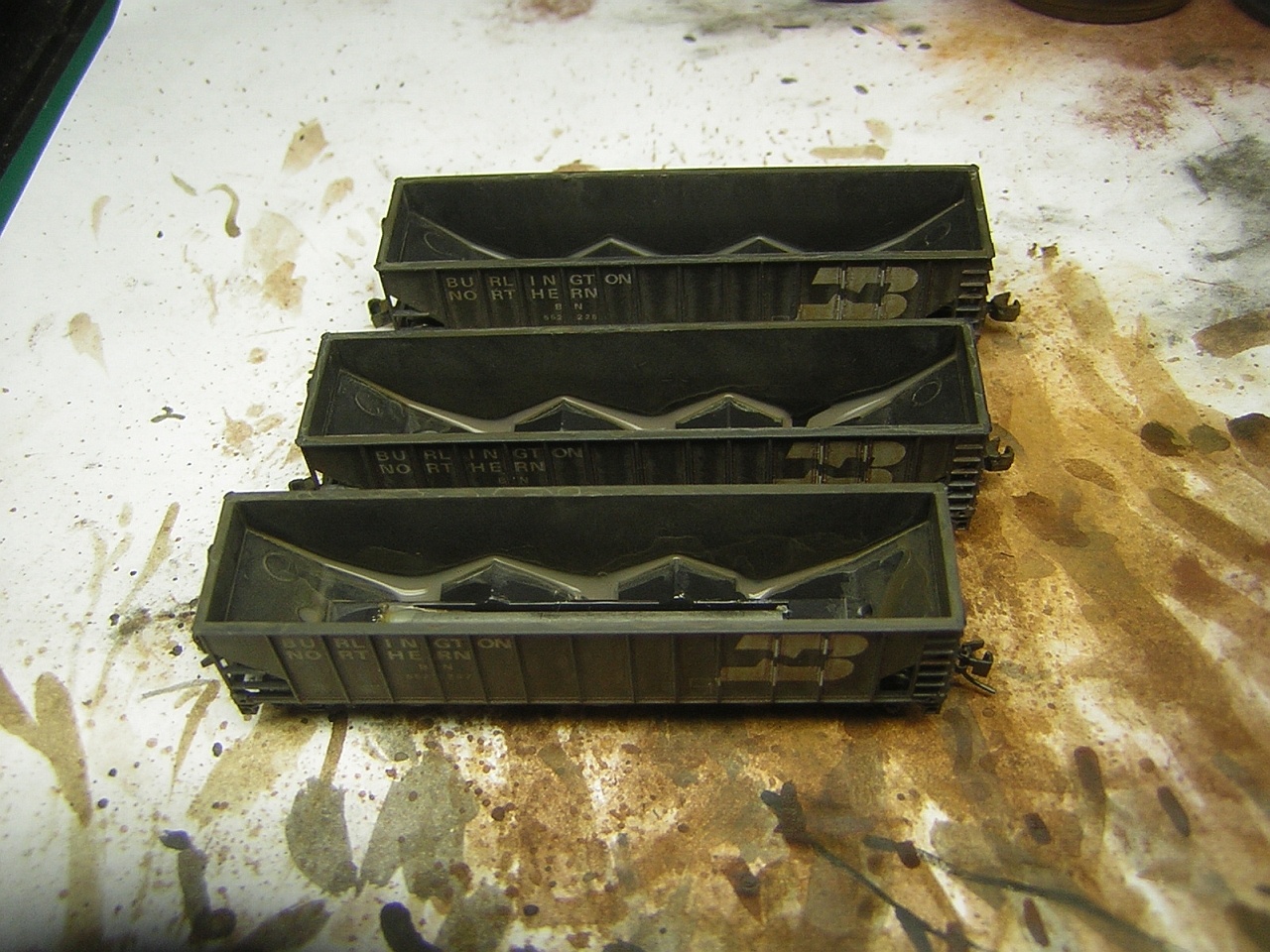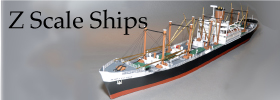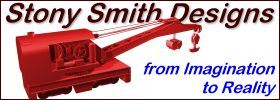Articles & Blogs
A few days ago, I received an email from one of my Yahoo groups, which I would like to share and see what your thoughts are. Though the modeler in question does not model in Z, he is into model railroading. The email in its entirety is below in black font and the sender's name removed. John
Hi all,
Two years ago, I was putting in maybe 5-10 hours per kit or kit-bashed N Scale Structure. This including some air misting, detailing and even putting in floors with multiple lights.
I was heading over 20 hours per model with roof and other interior/exterior detailing, when I came upon a fellow Model Railroader who was getting out...Citing the hobby was taking too much time (and money) away from his family. I bought his tools, which includes a fine array, purchased from around the world. Over 100 micro drills. He was easily spending 50+ hours per structure. He had created his own jigs for gluing.
I began to do the same, mostly to fit and finish and aligning all parts perfectly before applying any glue. No gaps, all set at 90 degree angles...etc. Absolutely no glue showing inside or out. What took me one evening now took me days into weeks. I began to buy my nail files at the Dollar Store and every week at Hobby Lobby with a 40% off coupon.
I then began to whittle in Miller Engineering signs, and my structures began to have a layered affect with a 3 Dimensional quality...with indented balconies and entry ways. I was heading into months to complete one model and was near 100 hours per model.
I then began to plan models, taking several small bits and pieces from several kits. Mostly from second-hand glued up kits. My only visits to real LHS and Train Stores was for scratch building supplies. Perhaps buying upwards of 20-40 built (used) kits in a box for $50, then taking them all back down to their many components. Can take me upwards of 3 months to set aside the needed parts, before I even begin the model. I began to measure original buildings for a more prototype rendition. Finding that often an HO Scale foot print to a given structure was still at 80% to the footprint presented even in N scale. I began to put N Scale Doors and Windows into scratch built/kit-bashed structures which might look normal to some people as to their size on an HO Scale Layout.
Example > My fire house is uses two N Scale Fire houses to produce one model; and yet it is still about 80% Compression. My Downtown Hotel uses three Life/Like Downtown Hotels. Then i got worse. I am now going around picking up anything which I might be able to use in N Scale. Acrylic what-evers from places like Tap Plastics or from the shelves of Thrift Shops. Not just plastic or even wood, but varieties of metal.
At about this time, I began to get the notion of why an Artist never shows his work till 100% completed. And Oops! An obsessive-compulsive trait began to seep through in my behavior. I would find myself into a model at over 20 hours, then !??! decide to start completely over....Cause I knew I could do much better from the Git Go on a Second or even 7th attempt.
>> Took seven attempts to cut a thin strip of Miller Engineering material then bend it around a curve for a Theater to look like Neon Lighting..Then...actually get it to light, after it had been glued in place....And still light up the next week.
The I began to step it up again with modeled foundations. And worse...Lighting. Even lighting the basement of a model.
I began to incorporate Fiber Optic lighting for subtle affects and have used a number board for street address on an N Scale House. A year later it is still working...but I have yet to complete that model. LED's on rheostats. Woodland Scenics and a another system just hit the market but before them...I was making my own on PC boards.
Smooth transitions between joined pieces by using a variety of tools and jigs for gluing and setting up along with a lot of fine nail files and sanding paper upwards to 800 grit. Joined walls without the need for ivy or a downspot/drain. I am now incorporating indented El Wire and experimenting with back lighted names on building...
I am nearly afraid that I will be making my own Miller Engineering Signs Soon'. I am already at the point where I am creating my own flower beds from the 50% off sales at Hobby Lobby from their flower sections with a fine cutting X-acto blade. And putting them together with a tweezers like a fly fisherman. Needle tips of super glue. I went to creating scene dioramas on a module/sabot board. and incorporating more than one Miller Engineering sign into one building, along with fiber optics, LED's and El Wire.
One model has just tipped over 200 hours. Then I stopped and went Cold Turkey on my structures. Pushed myself away from my modeling desk.
Why? Needed the break for one...but also...For me to continue...into older age...I need a better work bench. More lighting, easier access, TV/Internet hook-up with plenty of Hot Tea standing by. A better more comfortable environment.
And the truth be known...I began to scare myself. Takes a lot of concentration for a 200 hour model, sort of like movie with Charleston Heston where while painting the Sisten Chapel (The Agony and the Ecstasy) he falls from the scaffold. Yes, I believe I drove myself to sickness. And my hands began to hurt and spasm.
Yes, I found my limit and it's just a bit beyond 200 hours for one model, even if stretched out over several days. There is a point in my endeavors where i must quit a model and put it to the side..Even if not yet completed.
Just wondering if anyone else has found themselves sanding on ONE model after 200 hours, where your sense comes back and you say enough? (at least for now and several days to come). What is the longest time you have spent on one model? Whether completed or not.
| Z Clearance | 2% Run | ||
| Inch | mm | Inch | mm |
| 1.5 | 40 | 75 | 2000 |
| 3% Run | 4% Run | ||
| Inch | mm | Inch | mm |
| 50 | 1333.33 | 37.5 | 1000 |
| Run Values are for one grade only | |||
| Scale Length Conversions | |||
| Actual Length | Z scale | ||
| 288 | inches | 1 | mile |
| 24 | feet | 1 | mile |
| 8 | yards | 1 | mile |
| 1 | inch | 0.003472 | miles |
| 1 | foot | 0.041666 | miles |
| 1 | yard | 0.125 | miles |
| 0.054545 | inches | 1 | foot |
| 0.055 | inches | 1 | foot |
| 454.5454545 | mm | 1 | km |
| 45.45454545 | cm | 1 | km |
| 4.545454545 | meters | 1 | km |
| 1 | mm | 0.0022 | km |
| 1 | cm | 0.022 | km |
| 1.385454 | mm | 1 | foot |
| 1.385 | mm | 1 | foot |
| Scale Size Conversions | ||||
| Scale | 1/ | Scale | To | From |
| T | 450 | Z | 2.045 | 0.489 |
| N | 160 | Z | 0.727 | 1.375 |
| TT | 120 | Z | 0.545 | 1.833 |
| HO | 87.1 | Z | 0.396 | 2.526 |
| S | 64 | Z | 0.291 | 3.438 |
| O | 48 | Z | 0.218 | 4.583 |
| #1 | 32 | Z | 0.145 | 6.875 |
| G | 22.5 | Z | 0.102 | 9.778 |
| F | 20.3 | Z | 0.092 | 10.837 |
| Round up to nearest hundreths | ||||
| for copier conversions | ||||
| Scale Speed Conversions | |||
| MPH | Inches/Sec | MPH | Inches/Sec |
| 1 | 0.08 | 50 | 4.00 |
| 5 | 0.40 | 75 | 6.00 |
| 10 | 0.80 | 100 | 8.00 |
| 15 | 1.20 | 125 | 10.00 |
| 20 | 1.60 | 150 | 12.00 |
| 25 | 2.00 | 175 | 14.00 |
|
Adding Panel Lines to ACF Hoppers |
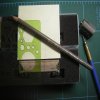 |
Here's a cheap and easy way to add those panel lines to your ACF Hoppers. Take a PrismaColor pencil and lightly trace the panel lines on the sides of the car. The box makes a great cradle for the car. Use the plastic box edges to help align your straight edge while you draw the panel lines. Done!
Adding panel lines to ACF Hoppers how to was written by Bill Mock in January 2010. This article has been assembled in order by the following links. Simply cut and paste the following links into your web browser to follow up on any additional comments, suggestions, or to view the larger images.
http://www.zcentralstation.com/index.php?view=detail&;id=2569&option=com_joomgallery&Itemid=178
| Hopper Weathering Clinic II By Bill Mock December 2009 |
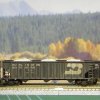 |
So here's how those BN Hoppers turned out after the surface rust dried. Not bad. I'll see if they need another wash. Maybe I'll just chalk them. But I now need to add some spots of rust; some random and some at the ladder, etc.
OK, it's after working hours, time to add some surface rust. So I start off by wetting the entire surface with "blue" windshield washing fluid. Then I mix a very diluted wash of Raw Umber acrylic paint and more blue windshield washing fluid. I wash this on to the surface and let it pool in the edges and build up. Then, walk away. Check back to make sure that the wet surface is drying evenly. If the wash dries unevenly and edges start to form, dab your brush in a little plain blue washing fluid. Dry the brush on a paper towel. Then with the now damp brush, lightly brush over the unwanted paint edge. If caught early, it should dissolve this "edge" and leave a nice even wash again. This method is very similar to watercolour painting techniques. Check back tomorrow for photos of the Hoppers when they are dry.
Hopper Weathering Clinic II how to was written by Bill Mock in December 2009. This article has been assembled in order by the following links. Simply cut and paste the following links into your web browser to follow up on any additional comments, suggestions, or to view the larger images.
http://www.zcentralstation.com/index.php?view=detail&;id=2460&option=com_joomgallery&Itemid=178
http://www.zcentralstation.com/index.php?view=detail&;id=2461&option=com_joomgallery&Itemid=178
http://www.zcentralstation.com/index.php?view=detail&;id=2458&option=com_joomgallery&Itemid=178
http://www.zcentralstation.com/index.php?view=detail&;id=2459&option=com_joomgallery&Itemid=178
| Hopper Weathering Clinic By Bill Mock December 2009 |
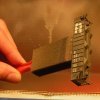 |
Here is the first stages of weathering of my new BN Open Hoppers and UP PS2 Hopper. The trucks and wheels were removed and painted with a wash of Poly Scale Oily Black and Rust. The car bodies were airbrushed with a 10:1 wash of Poly Scale Reefer White and Earth to fade them. Then the bottoms were airbrushed with a 10:1 wash of Poly Scale Oily Black. I use plain old "blue" windshield washing fluid as an airbrush thinner for faster paint drying. The next step for these cars is a brushed on "surface rust" wash of a Raw Umber acrylic paint.
Hopper Weathering Clinic how to was written by Bill Mock in December 2009. This article has been assembled in order by the following links. Simply cut and paste the following links into your web browser to follow up on any additional comments, suggestions, or to view the larger images.
http://www.zcentralstation.com/index.php?view=detail&;id=2455&option=com_joomgallery&Itemid=178
http://www.zcentralstation.com/index.php?view=detail&;id=2456&option=com_joomgallery&Itemid=178
http://www.zcentralstation.com/index.php?view=detail&;id=2457&option=com_joomgallery&Itemid=178
| Hopper Weathering Clinic III By Bill Mock January 2010 |
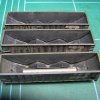 |
OK, I gave the inside of these hoppers a wash of Engine Black below the coal line. They look pretty good. At least they no longer look like raw plastic. Why am I weathering the inside of these hoppers? I don't know. You can see some of this surface above the Hay Brothers Coal Load. So that good. But who knows? Some day I may try to add some cross bracing and attempt to run these hoppers empty. May be it's just a Z-Scale - Zen thing. 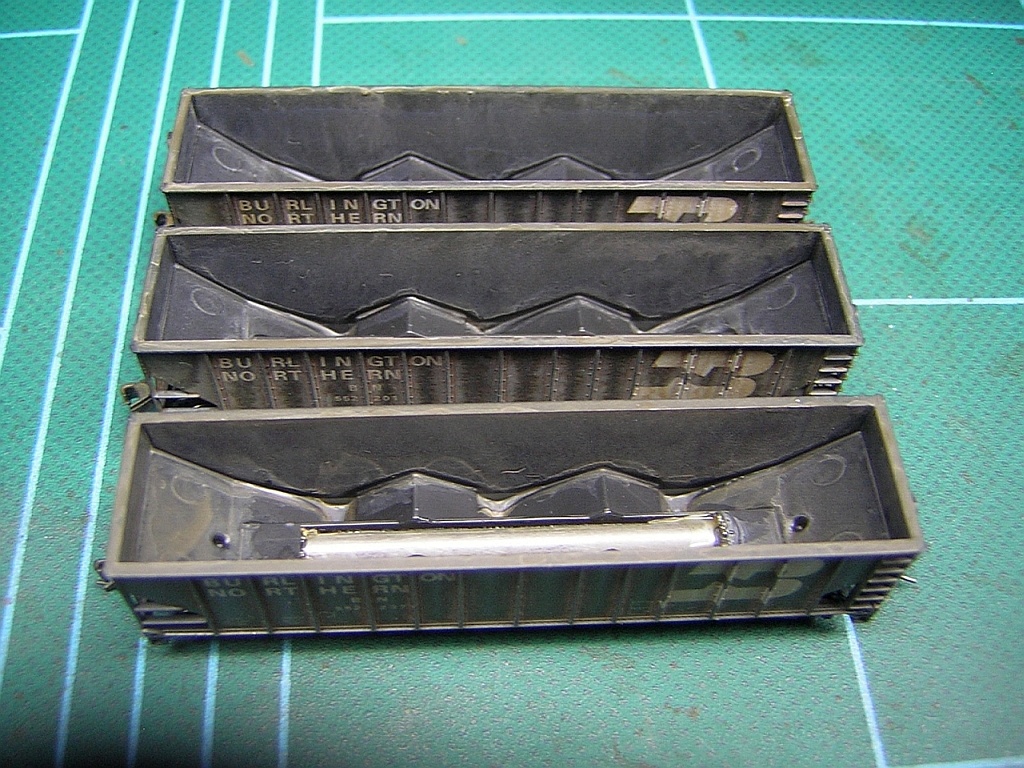
OK, time to go inside those hoppers! They get the same treatment, an acrylic rust wash. But this time, it's a wash of Grimy Black, Rust and a hint of Flat Aluminium. I used a cotton swab and "blue windshield washing fluid" to really scrub the inside of the plastic shell; to make sure that the paint-wash covers evenly. It looks awful to have the wash "bead up" around a bit of residual casting release oil. So scrub it down and then wash on the paint - all sides at once. Then let it dry, sitting on it's wheels. The paint wash gently washes down the side walls in a very realistic pattern. Let the first coat dry and then come back later to see if any additional paint washes are necessary. I'll probably add a wash of "Engine Black" below the line where the loaded coal sits and grinds into the side walls.
Hopper Weathering Clinic III how to was written by Bill Mock in January 2010. This article has been assembled in order by the following links. Simply cut and paste the following links into your web browser to follow up on any additional comments, suggestions, or to view the larger images.
http://www.zcentralstation.com/index.php?view=detail&;id=2475&option=com_joomgallery&Itemid=178
http://www.zcentralstation.com/index.php?view=detail&;id=2471&option=com_joomgallery&Itemid=178
http://www.zcentralstation.com/index.php?view=detail&;id=2470&option=com_joomgallery&Itemid=178

